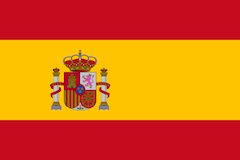Coronado, Jorge. Portraits in the Andes: Photography and Agency, 1900–1950. Pittsburgh: University of Pittsburgh Press, 2018.
Coronado, Jorge. “Instances of Agency: Julio Cordero’s Archive and Photographic Portraits.” Bolivian Studies Journal 23/24 (December 2018): 24–45.
Coronado, Jorge. The Andes Imagined: Indigenismo, Society, and Modernity. Pittsburgh: University of Pittsburgh Press, 2009.
McElroy, Keith. “The History of Photograph in Peru in the Nineteenth Century, 1839–1876.” PhD dissertation, University of New Mexico, Albuquerque, 1977.
Kossoy, Boris. “Photography in Nineteenth-Century Latin America: The European Experience and the Exotic Experience.” In Image and Memory: Photography from Latin America, 1866–1994, ed. Wendy Watriss and Lois Parkinson Zamora. Austin: University of Texas Press, 1998.
Majluf, Natalia, and Luis E. Wuffarden, eds. La Recuperación de la Memoria, 1842–1942. Lima: Museo de Arte de Lima y Fundación Téléfonica, 2001.
Mulder, Jan. Chambi en la Colleción Jan Mulder. Lima: Centro de la Fotografía and Centro de la Imagen, 2018.
Poole, Deborah. Vision, Race, and Modernity: A Visual Economy of the Andean Image World. New Jersey: Princeton University Press, 1997.
Trevisan, Paul, and Luis Massa. “Fotografías Cusqueñas Atravesando el Indigenismo.” Aisthesis no. 46 (2009): 39–64.
Peter Yenne. “Lost Worlds: Recent Discoveries in Andean Photo-History,” Aperture, no. 173 (Winter 1993): 32–45.




















